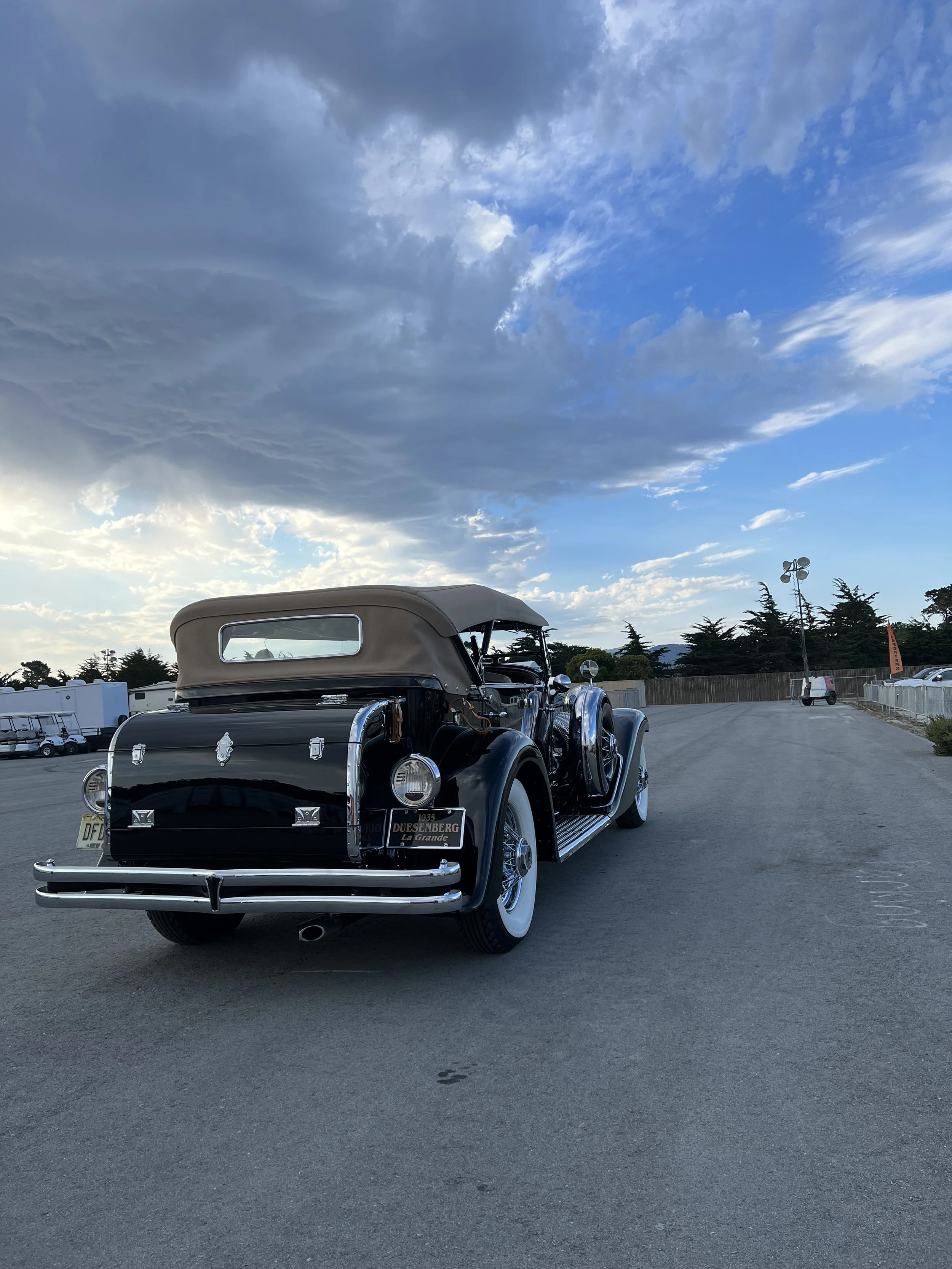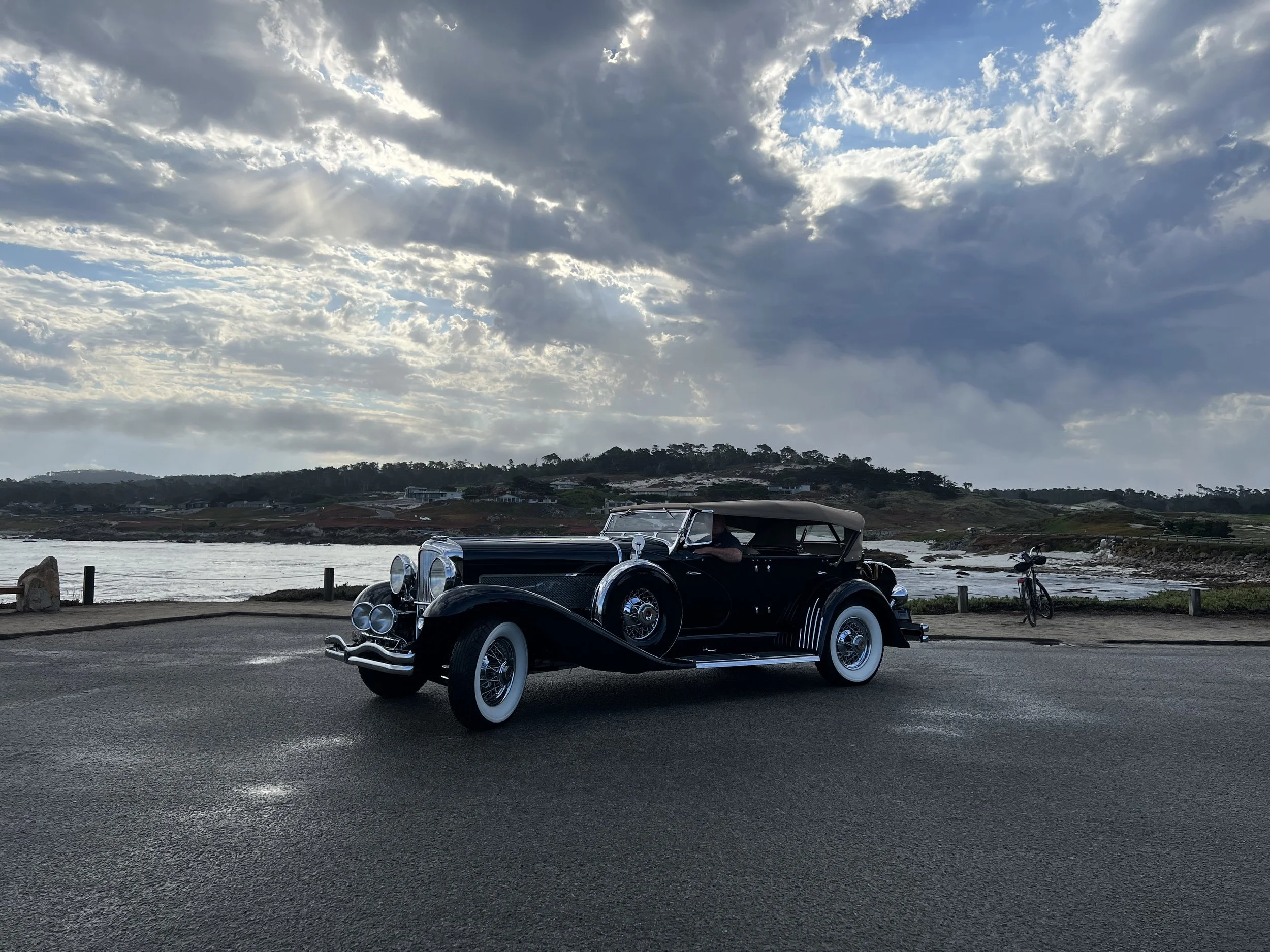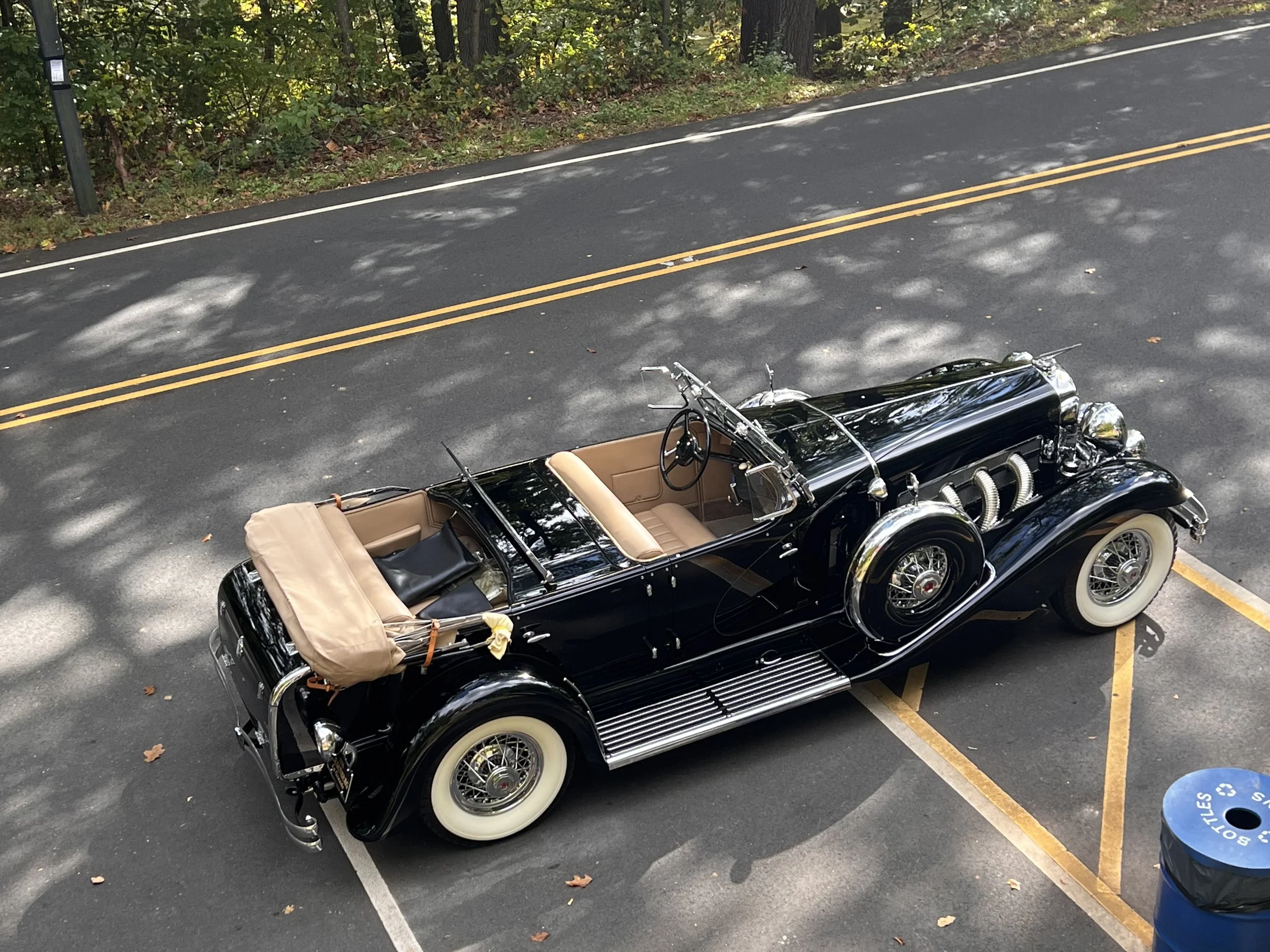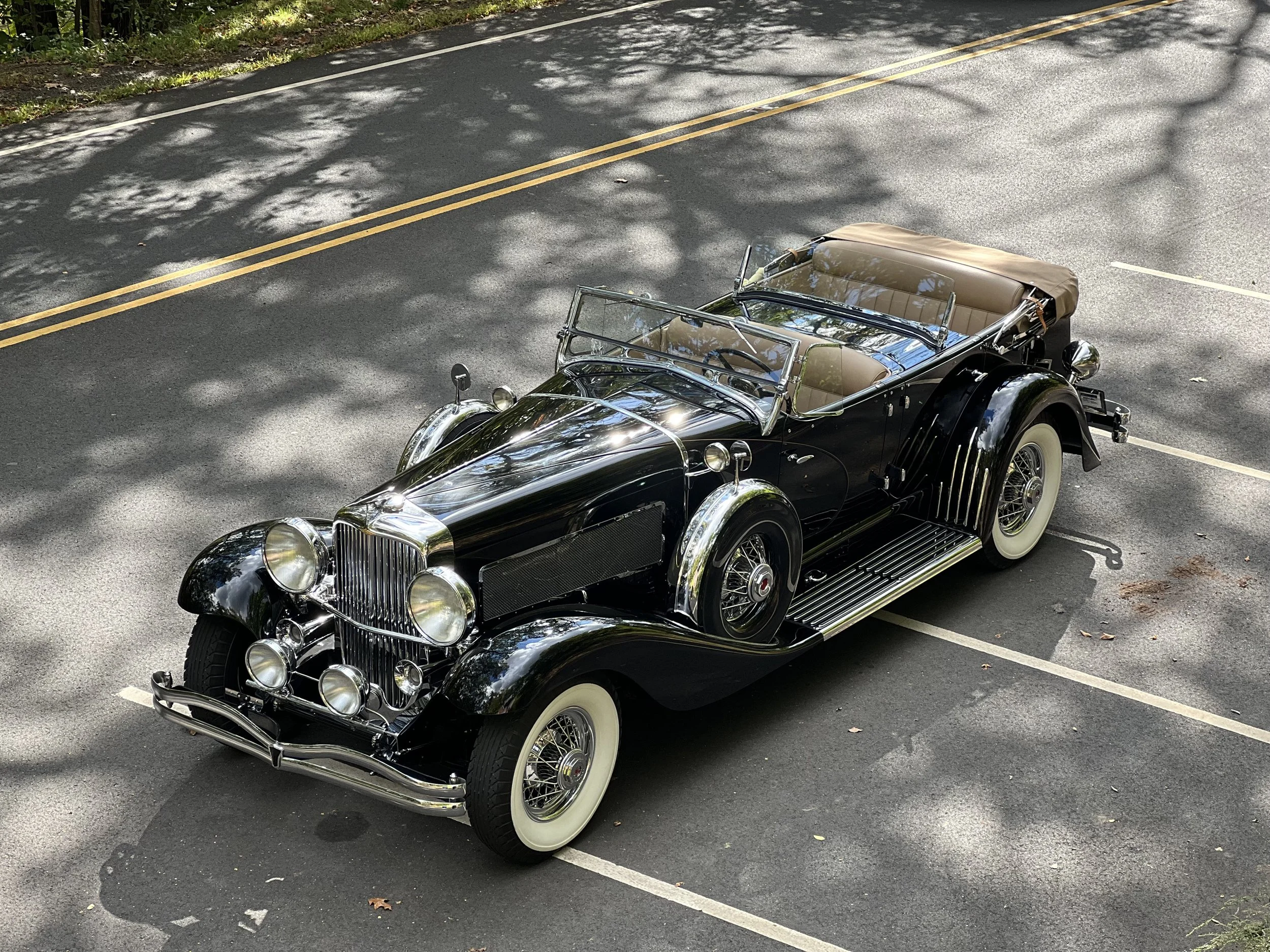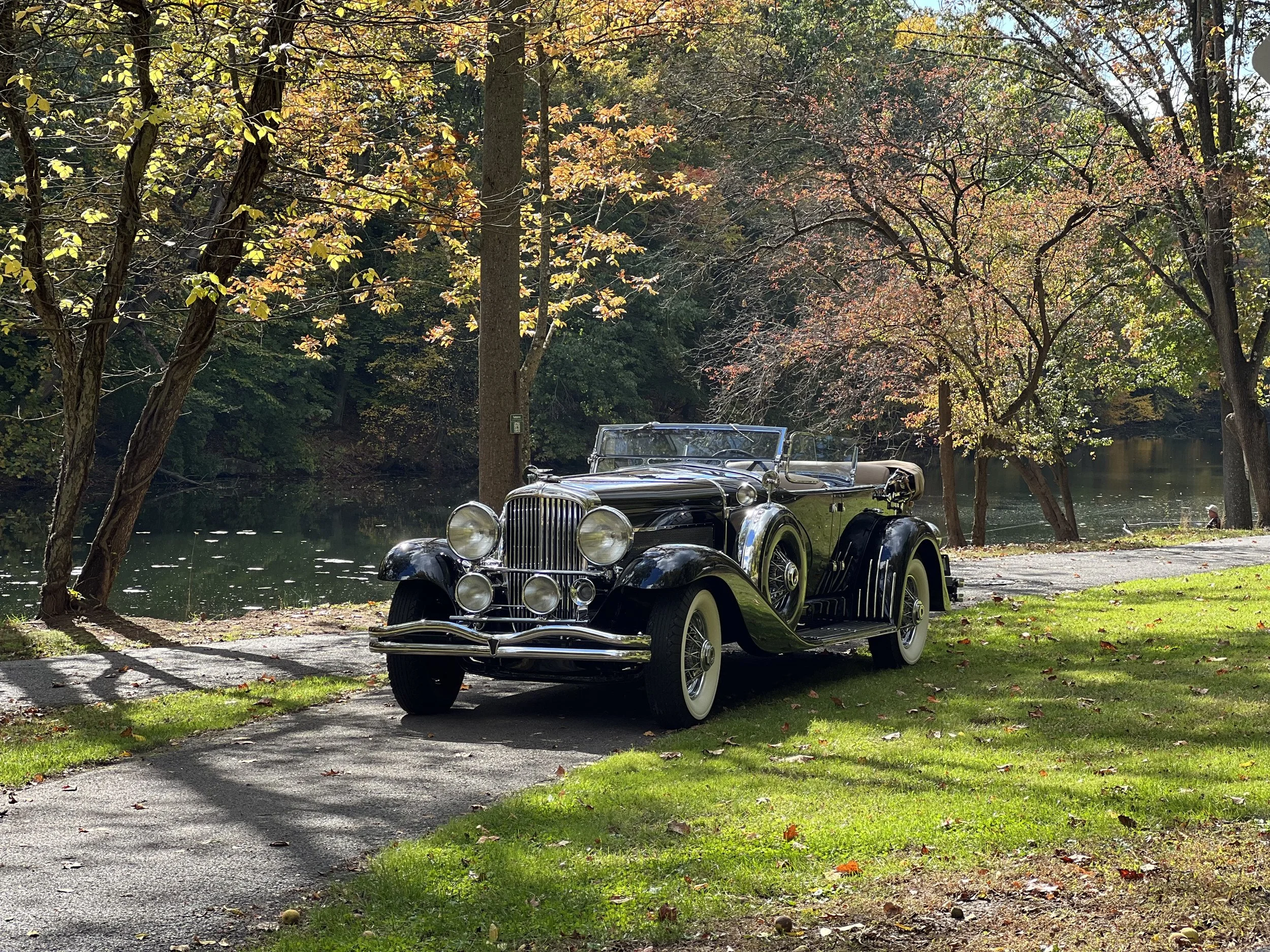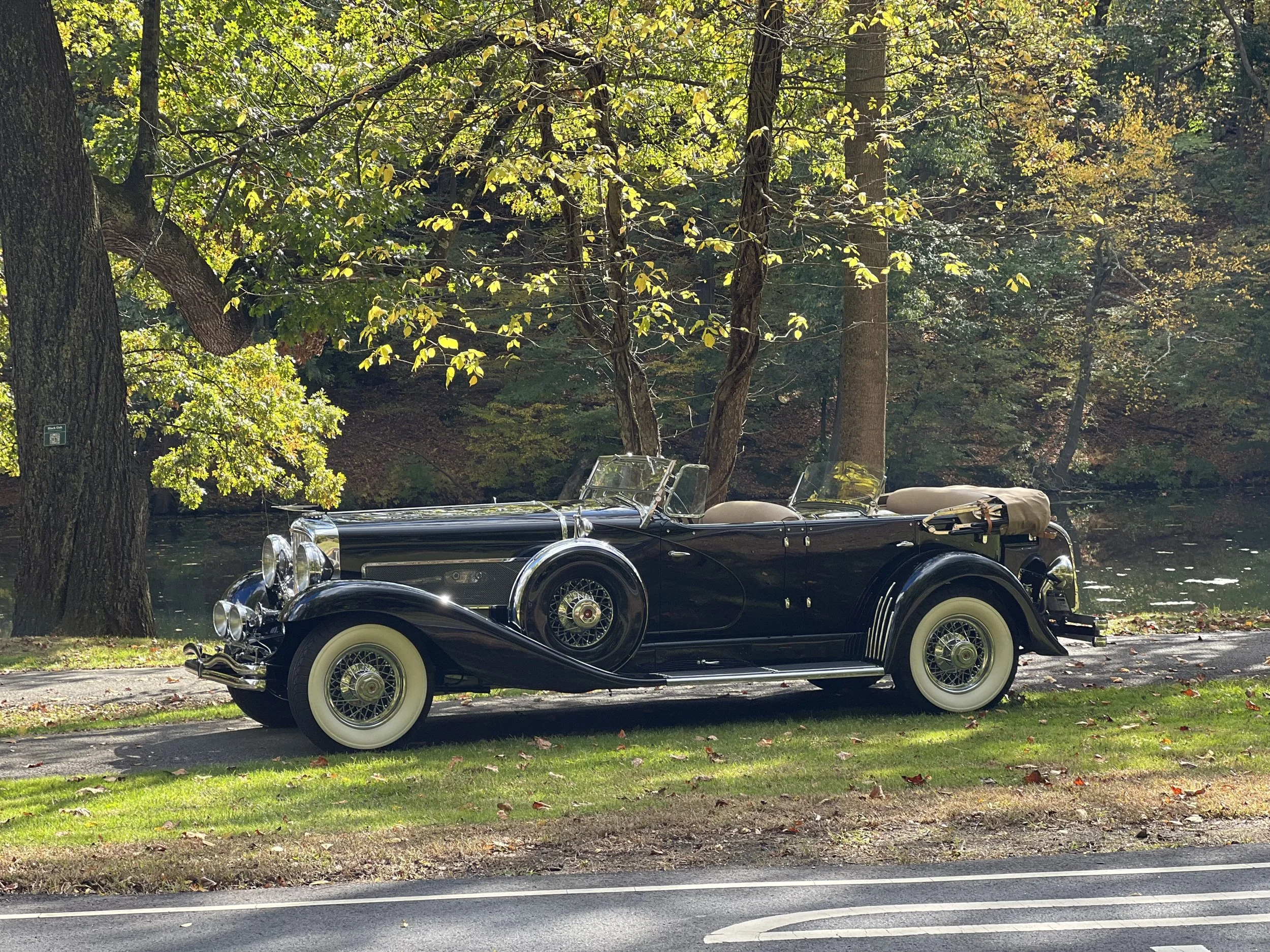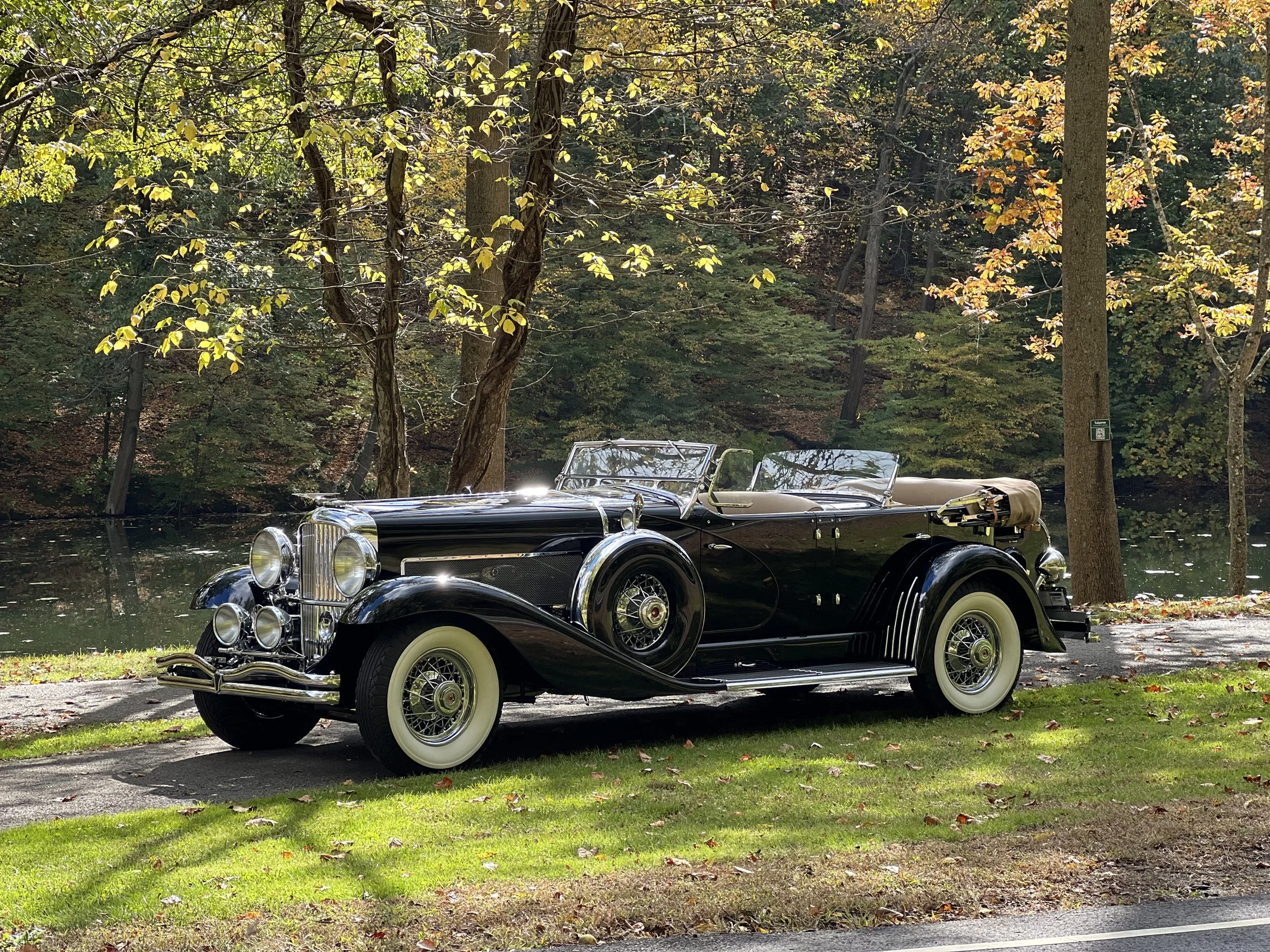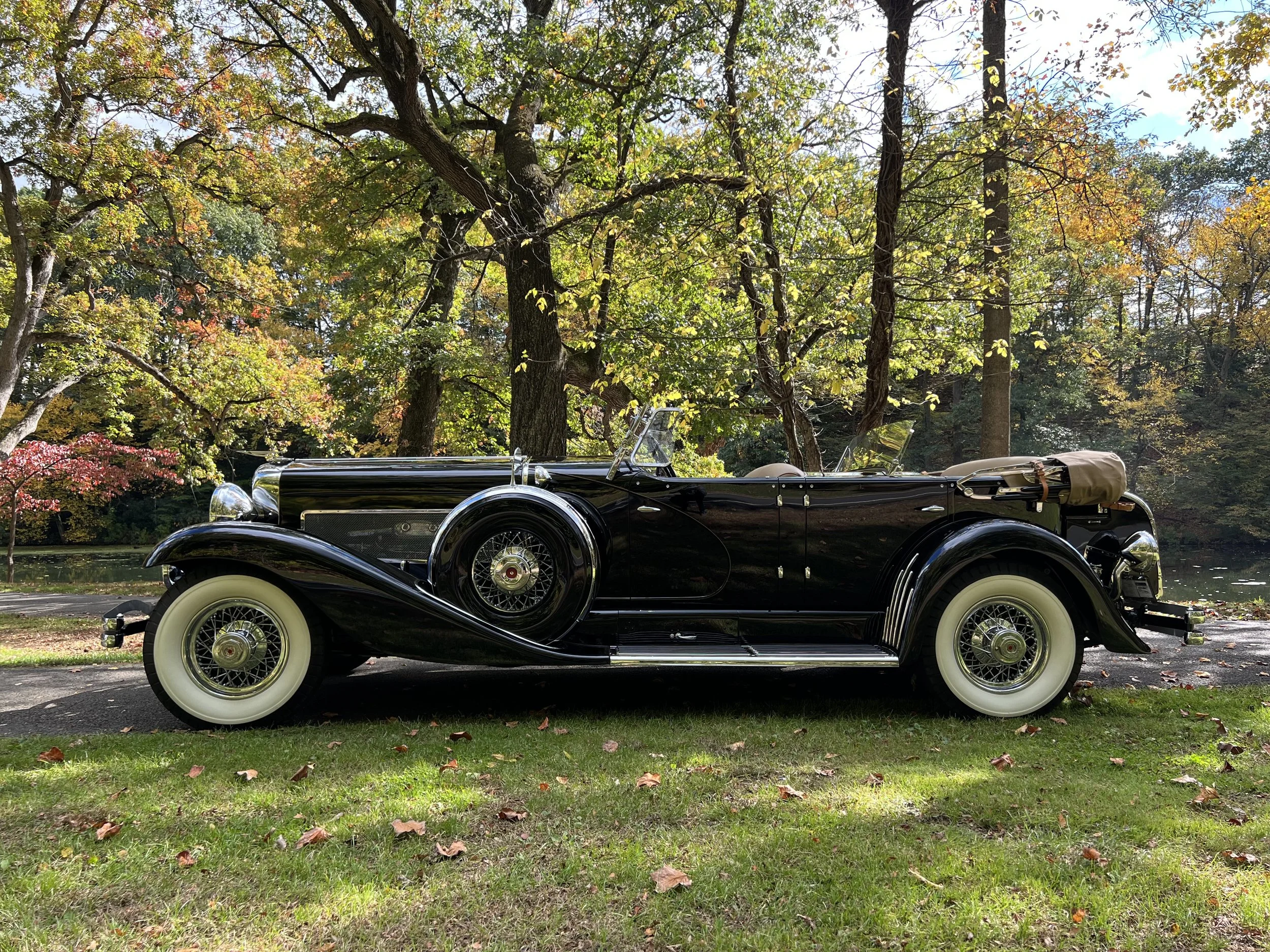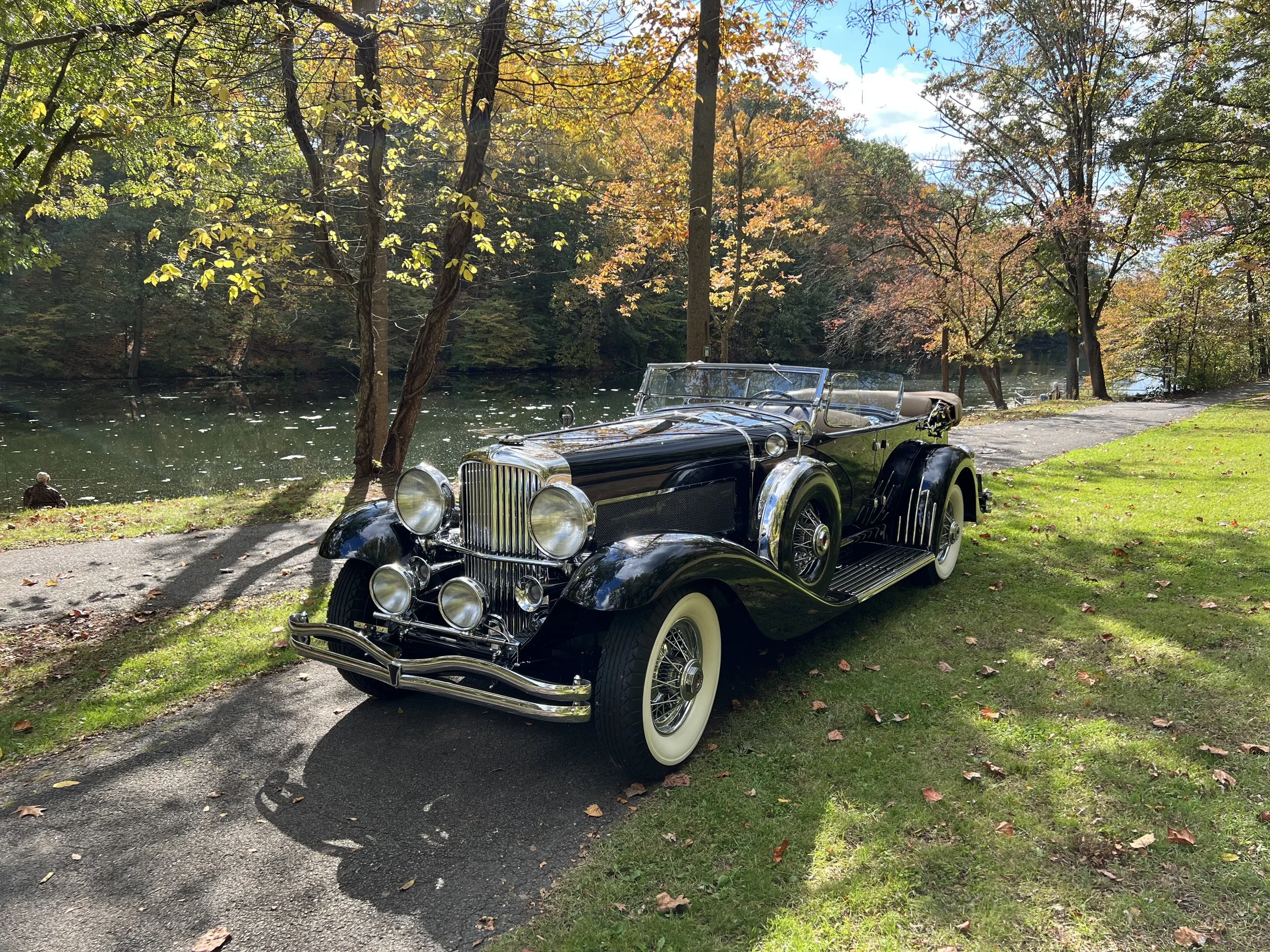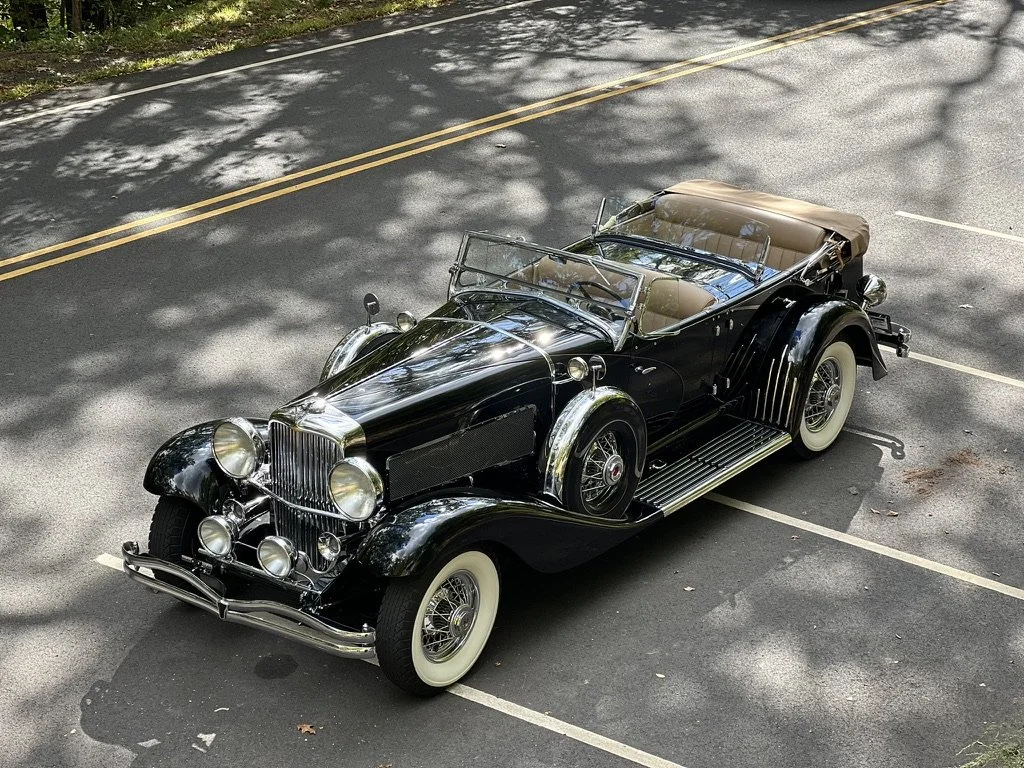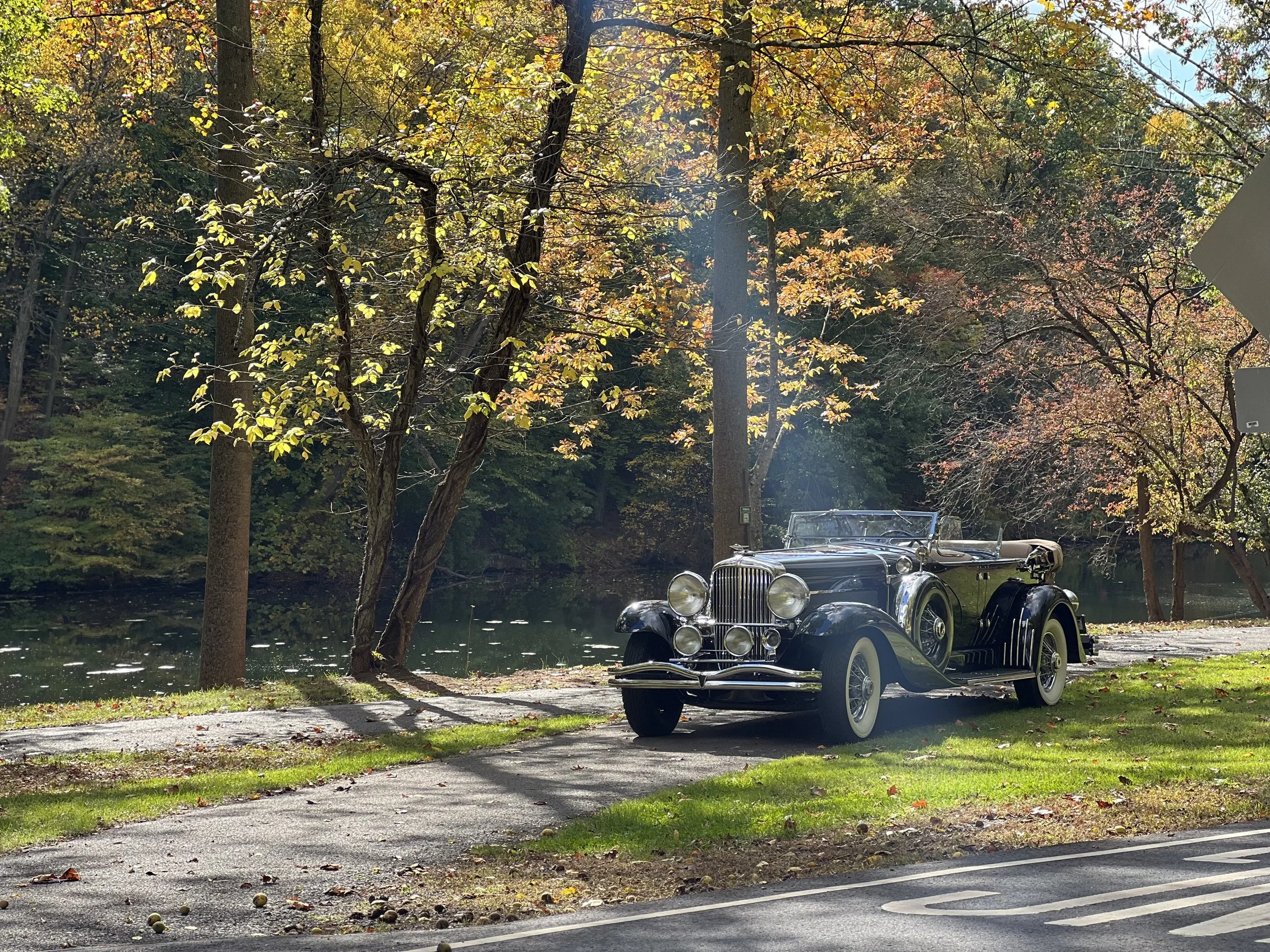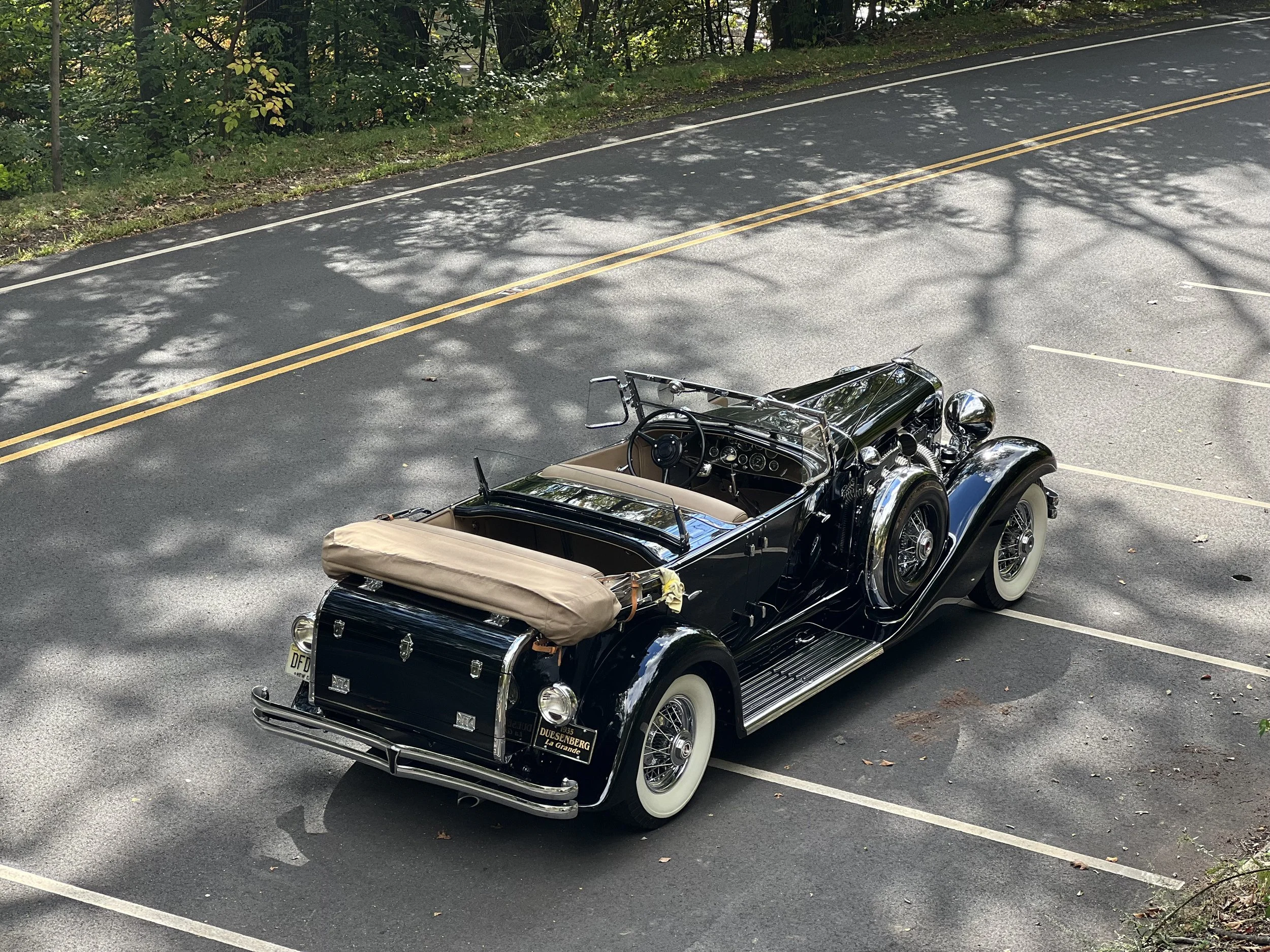1935 Duesenberg Model J 'Sweep Panel' Dual-Cowl Phaeton by LaGrande
Engine No. J-537
Chassis No. 2558
Overview & Significance
Among the most elegant and refined of the classic Duesenbergs, this 1935 Model J 'Sweep Panel' Dual-Cowl Phaeton by LaGrande is the final example of just 15 produced — a historically significant bookend to one of the marque’s most iconic body styles. Originally built as the New York factory branch demonstrator, it showcases a blend of dramatic coachwork and subtle refinements that mark the peak of Duesenberg’s design evolution.
Notably, this car retains its original frame, engine, firewall, and coachwork — an increasingly rare claim among surviving Duesenbergs. Featuring suicide-style front doors (believed to be unique to the final five LaGrande sweep panel phaetons), this car captures the precise moment when Duesenberg began shifting toward more streamlined, modern aesthetics — reflected in its skirted fenders and 17-inch wheels.
The Design: LaGrande's Refined Statement
The “sweep panel” itself — a recessed, C-shaped styling detail that curves gracefully from behind the hood ornament along the side of the car — had long been a hallmark of LeBaron’s earlier phaeton design. But in the hands of Gordon Buehrig, it evolved into something more subtle and sophisticated. Buehrig raised the beltline, introduced a reverse-curved rear cowl, and designed the top to fold almost flush with the bodywork — creating a sleek, cohesive silhouette when open or closed. Unlike most sweep panel cars that used the curve as a visual break for two-tone paint schemes, this example features a restrained gold pinstripe over deep black, elevating its elegance with a more understated luxury.
Adding to its distinction, this car is equipped with a rare multi-piece windshield — one of many details that contribute to its one-of-a-kind presence.
Ownership History & Notable Events
J-537 was completed and mounted on chassis 2558 in 1934, then served for over a year as the official demonstrator at Duesenberg’s New York showroom — likely driven by and presented to many high-profile prospective buyers. Its first private owner, Hugh Bancroft Jr., purchased the car in 1936. At just 26 years old, Bancroft was heir to Dow Jones & Co., publisher of The Wall Street Journal, and no stranger to bold statements.
After the war, the car surfaced on the West Coast, first in the hands of a San Francisco Chevrolet dealer and later with several California-based collectors.
History and Significance
In the early 1950s, it was acquired by Tom Carstens of Tacoma, Washington, who fitted the now-iconic side exhausts — a nod to the styling of supercharged Model Js. A fire in 1958 caused limited cosmetic damage, but the core structure remained intact.
Through the 1960s and ‘70s, the car passed through the hands of well-known Duesenberg restorers and collectors including Joe Kaufmann, known affectionately as “Dr. Duesenberg,” and Charles Johnson of Florida. Each steward preserved and presented the car with care, and it enjoyed a rich showing history across the U.S.
The car also spent time overseas during the height of the collector car boom before returning to the U.S. with enthusiast Mark Smith.
Restoration & Accolades
In 2000, the car entered the collection of Frank Ricciardelli, who commissioned a full concours-level restoration by renowned restorer Steve Babinsky at Automotive Restorations in Lebanon, New Jersey. Despite the car’s long and storied life, it remained remarkably complete. Babinsky was able to preserve and restore all of the original sheet metal — a rare feat for any prewar car, let alone one as significant as a Model J.
The restoration was nothing short of world-class. So refined was the work on the chassis that it was shown without bodywork in a dedicated Chassis Class at the 2002 Pebble Beach Concours d’Elegance. The following year, with body reinstalled, it returned to Pebble Beach and claimed First in Class.
Legacy & Current Status
As the last sweep panel dual-cowl phaeton ever produced by LaGrande, J-537 represents the pinnacle of Classic Era American design — and the culmination of Duesenberg’s boldest work. With its original mechanical components, award-winning restoration, and deep ownership history rooted in factory use, it stands as one of the finest surviving examples of the Model J lineage.
In 2021, the car was acquired by prominent businessman and classic car enthusiast Tom Maoli, joining his world-class collection of historically significant automobiles. Under his stewardship, J-537 continues to be shown and appreciated at the highest level — a lasting tribute to Duesenberg’s legacy of excellence and Gordon Buehrig’s enduring design brilliance.
Design Differences
Fitted with Murphy disappearing top bodywork as is built on the 'short' chassis
142.5 inches wheelbase, is 'short' only by Duesenberg's superlative standards
Light cream colored with chrome accents
Chrome strip that runs the length of the body
Fitted with desirable supercharger in the 1970s
All supercharged cars have the side exhaust pipes
Chrome mesh side hood
19 inch chrome wire wheels
This one opted for the regular black tires
Fitted with cowl running lights
Murphy’s signature thin “Clear-Vision” windshield pillars
Mahogany running boards
Brown convertible top
Dual horns in front
Rumble seat
Rumble seat steps
Exterior
Brown interior
Brown carpets
Center armrest (standard in murphy bodies)
Self folding chrome window sills
Exposed and stained wood inner doors
Interior
420 cubic inch inline 8
265 HP 374 torque (5.7:1 compression ratio)
Dual overhead cam
4 Valves per cylinder
Basics on Model J Duesenberg
Gallery

